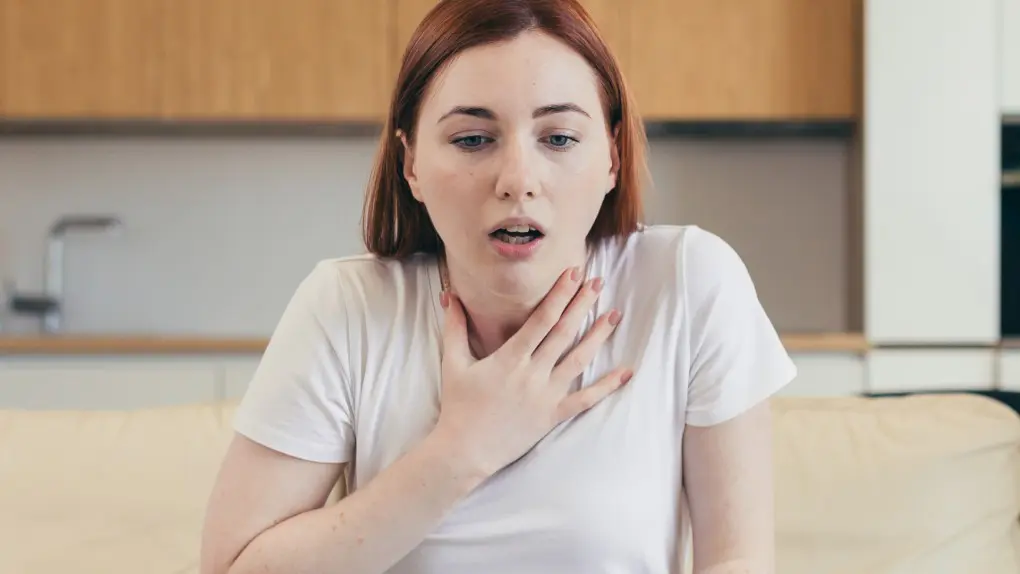
Silent Panic Attacks | Symptoms, Causes & Effective Management
In today’s high-stress world, the challenges of daily life can manifest in unexpected and often misunderstood ways. Among these challenges are panic attacks, notably silent panic attacks. These attacks can be just as debilitating as the more recognized forms of panic attacks but are often more challenging to identify due to their subtle nature. This blog explores the intricacies of silent panic attacks, including their symptoms, connections with factors like alcohol, OCD, and dehydration, and their differentiation from other conditions such as heart attacks and epilepsy.
What Are Silent Panic Attacks?
Silent panic attacks are a lesser-known form of panic attack characterized by intense internal fear without the more obvious physical symptoms like hyperventilation or shaking. This makes them difficult to recognize by the person experiencing them and those around them.
Silent Panic Attack Symptoms
Understanding the symptoms of silent panic attacks is crucial for early identification and management. Key symptoms include:
- A sudden, intense dread or doom seems to come out of nowhere.
- Racing heart or vibrations that may not be externally visible.
- Short breath or feeling like you can’t get enough air, even when resting.
- Dizziness or a sense of lightheadedness which can be confused with other conditions.
- Nausea or stomach discomfort with no apparent cause.
- A feeling of detachment or unreality is often described as an “out of body” experience.
These symptoms, while internalized, can be just as frightening and overwhelming as more visible panic attack symptoms.

Adding Personal Anecdotesatck
To make this topic more relatable, consider the story of Sarah, a 32-year-old marketing executive who first experienced a silent panic attack during a routine meeting. “I suddenly felt like I was floating outside my body,” she recalls. “My heart was racing, but I couldn’t show it. I felt like I was going to die, but I was sitting there silently, trying to keep my composure.” Sarah’s experience highlights how easily these attacks can go unnoticed by others, making them particularly isolating.
The Difference Between a Heart Attack and a Panic Attack
A key reason for the fear surrounding panic attacks, especially silent ones, is their similarity to heart attacks. Many people who experience a panic attack for the first time believe they are having a heart attack, which only adds to their anxiety.
Key Differences:
- Chest Pain: While both conditions can cause chest pain, heart attack pain typically radiates to the arm, neck, or jaw, whereas panic attack pain tends to be more localized and often accompanies anxiety.
- Onset: Heart attacks generally develop gradually and worsen, while panic attacks often reach their peak intensity within minutes.
- Trigger: Heart attacks may occur after physical exertion, but panic attacks can happen without any physical cause, often triggered by stress or anxiety.
These differences are crucial for managing your response and seeking appropriate medical care.

Panic Attack or Epilepsy: How to Tell the Difference
Panic attacks and epilepsy can share symptoms like sudden fear and physical distress, making them difficult to differentiate.
Differentiating Factors:
- Seizure Activity: Epileptic seizures often include uncontrollable shaking and loss of consciousness, unlike panic attacks, which do not cause these symptoms.
- Aura vs. Panic: Those with epilepsy may experience an “aura“ before a seizure—a specific feeling or sensation that something is about to happen—whereas panic attacks tend to start suddenly.
- Post-Episode Symptoms: After a seizure, individuals often feel confused or exhausted, a state known as the postictal phase, while people recovering from a panic attack typically remain fully conscious and aware.
Understanding these differences can help in seeking the proper treatment and avoiding misdiagnosis.
Alcohol and Panic Attacks: A Volatile Mix
Alcohol is often used as a coping mechanism for stress, but it can exacerbate or even trigger panic attacks, particularly in those already prone to anxiety.
Does Alcohol Cause Panic Attacks?
- Alcohol as a Trigger: Alcohol can reduce inhibitions and impair judgment, which may lead to heightened anxiety and panic attacks, especially in individuals who are already anxious.
- Dehydration: Alcohol is a diuretic, leading to dehydration, which can worsen anxiety symptoms and potentially trigger a panic attack.
- Withdrawal: After the initial calming effect, alcohol withdrawal can increase anxiety, leading to panic attacks during or after drinking.
Panic Attack Hangover Symptoms
The morning after drinking, some people experience “hangxiety”—hangover anxiety—which can include symptoms similar to a panic attack:
- Rapid heartbeat and feelings of dread.
- Nausea and stomach upset.
- Dizziness and a sense of unreality.
These symptoms can make hangovers particularly unpleasant and stressful.
OCD and Panic Attacks: A Common but Challenging Combination
Obsessive-Compulsive Disorder (OCD) and panic attacks frequently co-occur, creating a challenging cycle of anxiety and compulsive behavior.
OCD with Panic Attacks
- Intrusive Thoughts: OCD often involves intrusive, unwanted thoughts that can trigger panic attacks as the fear of these thoughts becomes overwhelming.
- Compulsive Behaviors: The compulsive actions associated with OCD, such as repetitive checking or cleaning, can become overwhelming and lead to panic when the individual feels unable to perform these rituals adequately.
- Treatment: Cognitive-behavioral therapy (CBT) is effective for both OCD and panic attacks, helping individuals break the cycle of intrusive thoughts and compulsions.
Can Dehydration Cause Panic Attacks?
Dehydration is a surprisingly significant factor in anxiety and panic attacks.
How Dehydration Affects Anxiety
- Electrolyte Imbalance: Dehydration can lead to an imbalance in electrolytes, which are essential for brain function, causing dizziness, confusion, and anxiety—potential triggers for panic attacks.
- Increased Heart Rate: Dehydration often causes a faster heart rate, mimicking the symptoms of a panic attack and potentially triggering one.
- Stress Response: Dehydration acts as a physical stressor on the body, which can exacerbate anxiety in those prone to panic attacks.
Maintaining proper hydration is an essential but often overlooked strategy in managing anxiety and preventing panic attacks.
Managing Panic Attacks: Practical Tips
Understanding the triggers and symptoms of panic attacks is the first step in managing them. Here are some practical tips to help reduce the frequency and severity of panic attacks:
- Stay Hydrated: Drinking plenty of water is crucial, as dehydration can trigger panic attacks.
- Limit Alcohol: Reducing or avoiding alcohol can help prevent panic attacks, particularly in those with a predisposition to anxiety.
- Cognitive Behavioral Therapy (CBT): CBT is highly effective for both panic attacks and OCD, helping individuals reframe their thoughts and reduce the severity of panic episodes.
- Mindfulness and Relaxation Techniques: Deep breathing, meditation, and progressive muscle relaxation can help calm the body and mind, making panic attacks less likely.
- Exercise Regularly: Regular physical activity can reduce stress and anxiety, helping to prevent panic attacks. Just remember to stay hydrated!
Visual Aids
To further clarify the differences between silent panic attacks, heart attacks, epilepsy, and the impact of alcohol on panic attacks, visual aids such as infographics or diagrams can be incredibly helpful. For example, a side-by-side comparison chart of symptoms for panic and heart attacks could quickly illustrate the differences for readers.
When to Seek Help
If you experience panic attacks, particularly silent ones, it’s crucial to seek professional help. Early intervention from a mental health professional can provide you with the tools and strategies to manage your anxiety effectively. This is especially important if your panic attacks are linked to other conditions like OCD or substance use, where a tailored treatment plan can make a significant difference.
Professional Input
For added accuracy and credibility, consider consulting a mental health professional or medical expert when exploring the content of this blog. Their input ensures that the information is accurate and valuable for readers. Quotes or insights from professionals can also add depth and reliability to the content, making it more impactful.
Summary
Silent panic attacks are a complex and often misunderstood condition. They can be triggered by a variety of factors, including dehydration, alcohol use, and OCD, and they usually mimic other severe conditions like heart attacks and epilepsy. Understanding the symptoms and causes of silent panic attacks can help those affected manage their anxiety more effectively.
This comprehensive guide aims to help those with panic attacks by offering practical tips and professional insights. By recognizing symptoms, understanding potential triggers, and exploring treatment options, individuals can regain control over their mental health and lead a more balanced life.
Frequently Asked Questions (FAQs)
What is the difference between a silent panic attack and a regular panic attack?
A silent panic attack involves intense internal symptoms like overwhelming fear, racing heart, and shortness of breath without the more visible signs such as hyperventilation, crying, or shaking, which are common in regular panic attacks. Because the symptoms are less noticeable, silent panic attacks can often go unrecognized by others.
Can silent panic attacks cause physical harm?
While silent panic attacks are incredibly distressing, they typically do not cause physical harm. However, frequent panic attacks can lead to chronic stress, which may contribute to health issues over time. It’s essential to seek help if you experience frequent panic attacks to manage your symptoms effectively.
How can I tell if I’m having a panic attack or a heart attack?
Panic attacks and heart attacks can share similar symptoms, such as chest pain and shortness of breath. However, panic attacks often peak within minutes and are associated with intense fear. In contrast, heart attacks generally come on more gradually and may be accompanied by physical exertion, pain radiating to the arm or jaw, and other symptoms like sweating. It’s always safest to seek emergency medical attention if you’re unsure.
Does alcohol increase the risk of panic attacks?
Yes, alcohol can increase the risk of panic attacks. It can act as a trigger due to its effects on the nervous system and its potential to cause dehydration, which can exacerbate anxiety. Additionally, the withdrawal effects after alcohol consumption can lead to increased anxiety and panic attacks, commonly referred to as “hangxiety.”
Can dehydration cause a panic attack?
Dehydration can contribute to anxiety and panic attacks by causing symptoms such as dizziness, increased heart rate, and confusion. These physical stressors can trigger a panic attack in individuals who are prone to anxiety.
Is there a connection between OCD and panic attacks?
Yes, there is a significant connection between OCD and panic attacks. The obsessive thoughts and compulsive behaviors associated with OCD can lead to heightened anxiety, which may trigger panic attacks. Individuals with OCD often experience panic attacks when they feel they cannot perform their compulsions or when intrusive thoughts become overwhelming.
How can I prevent panic attacks?
Preventing panic attacks involves managing stress and anxiety through various strategies:
- Stay hydrated to avoid dehydration-related triggers.
- Limit alcohol consumption, which can exacerbate anxiety.
- Practice mindfulness and relaxation techniques like deep breathing or meditation.
- Engage in regular physical exercise, which helps reduce overall anxiety levels.
- Seek therapy, such as Cognitive Behavioral Therapy (CBT), which is highly effective in managing panic attacks and related conditions like OCD.
When should I seek professional help for panic attacks?
You should seek professional help if:
- You experience frequent panic attacks that interfere with your daily life.
- Other conditions like OCD or substance use accompany your panic attacks.
- You’re unsure whether your symptoms are due to a panic attack or another medical condition, like a heart attack or epilepsy.
- You feel overwhelmed and unable to manage your anxiety on your own.
A mental health professional can provide you with the tools and strategies to manage panic attacks effectively and improve your quality of life.
